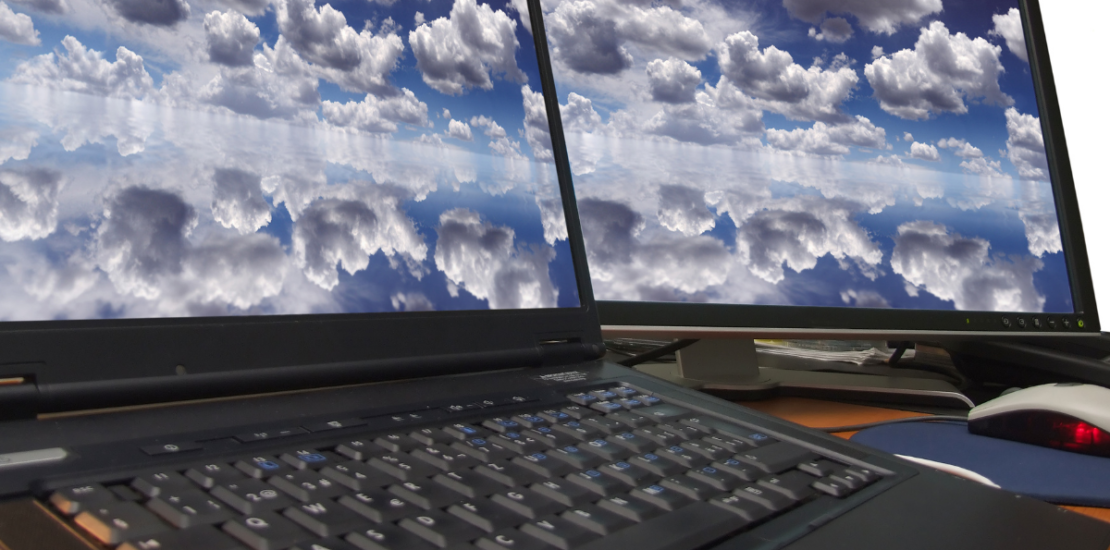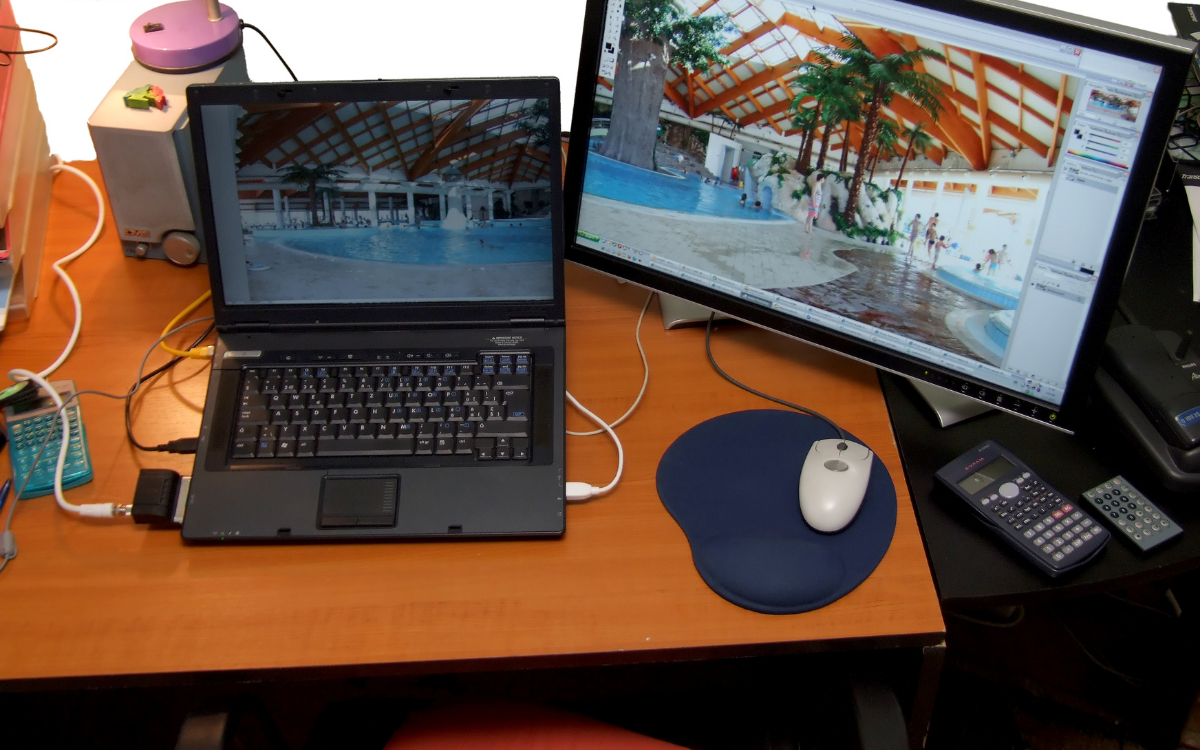5 Benefits of Using Dual monitors for remote working
- 10 May 2021
- Posted by:
- Categories: Remote IT Support, Technology

5 Benefits of Dual Monitors for Remote Working
Covid changed the way we work forever by forcing businesses and employees to fully embrace remote working. While many weren’t prepared for such a swift change, many employees now have a home-based office set up and ready for what the future may bring.
Now a year on, it’s time to make sure that home offices replicate what’s available in the workplace. As many were set up quickly, they may not necessarily have the right technology nor be the most productive.
Most IT companies recommend using two screens as opposed to one in any work situation. Having a second screen while working remotely can help increase focus and efficiency while minimising potential distractions that may affect productivity.
So are two monitors better than one? Let’s explore the benefits of dual screens when working from home.
Twice the benefits by using two screens
Having double monitor configurations can help make your systems and processes faster and more flexible. Gone are the days of having just one screen to flip between applications. Two monitors makes things easier and more enjoyable.
-
Dual screens and Productivity
Working remotely has the increased potential for an employee to get distracted easily. Yet any IT solutions company will tell you that increasing productivity is one of the main benefits of using dual monitors. Research has shown that productivity can actually increase by 42% with the use of double monitors. Just by decreasing the amount of time it takes to open and close multiple windows, you could be saving time and become more efficient.
2. Increased Focus with two screens
Dual screens can help you to maintain focus on priorities while not being side tracked. For instance, it allows you to monitor your emails on one screen while working on documents and projects on the second monitor. Therefore allowing you to concentrate on primary tasks yet still being available online.
3. Better Multi-tasking
Working remotely has its challenges as you juggle home life and work life. Having two screens can help you multi-task by allowing you to view or work on two things at once. Dual screens simply make multi-tasking easier.
4. Dual monitors and Speed
Over the past few years, small and medium businesses have vastly increased the number of productivity apps that they use. From finance and communication to project management, an employee is constantly switching between apps all day. Instead of constantly logging in and out or flipping between tabs, dual screens allows you to be more efficient and agile.
5. Collaboration With Double Monitors
IT consulting companies will often advise that an additional monitor can enhance collaboration within your business. Simply having shared brainstorming and ideas open on one screen whilst working on the other makes communication easier.
How to set up dual monitors at home
Do you have space for two Screens?
Setting up a second monitor isn’t that complicated, you just need the space in your home setup. While two 22” displays are common in office setups, a home office may need a smaller configuration.
Dual Monitors and Graphics cards
To successfully set up a second screen, you’ll need a laptop with a graphics card that can contend with two monitors. Most computers these days do, but depending on the age of your computer you may need to upgrade your existing graphics card at a relatively low cost.
If you’re not sure your laptop is up to scratch, have a chat with your IT support company.
Bezel or border sizes
If possible, use a monitor that has thin or narrow border edges also known as ‘bezels’. This will allow you to see more on your screen.
Connectivity
Connecting your monitor to your computer is quite simple. Most come with VGA or DVI cables. You may have to source a HDMI or DisplayPort cable if necessary.
How to set up your dual monitors
Extending your computer to a second screen is actually very easy. All it takes is a simple configuration available through your computer’s settings and screen option control panels.
Depending on whether your setting up a PC or Mac and what operating system you’re using, it should be pretty straight forward.
For a PC on Windows 10,
Step 1: Connect your second monitor to a power outlet and an available port on your PC.
Step 2: Next tell Windows how to manage the two monitors. On Windows 10, select Start> Settings>System>Display
Your PC should automatically detect your monitors and show your desktop. If you don’t see the monitors, select Detect.
Step 3: In the Multiple displays section, select an option from the list to determine how your desktop will display across your screens.
Step 4: Once you’ve selected what you see on your displays, select Keep changes.
Microsoft suggests using the recommended resolution to get the most out of your displays.
You’re ready to go
Configuring a second monitor from home is pretty straight forward. But finding the best setup for your employees may require working with an experienced IT support provider. If you feel you need an IT expert to help you guide you through it, feel free to give us a call. Our team of London IT Support technicians can offer advice and get you started with dual monitors.
